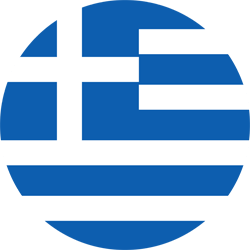At just 27 years old, Achilleas Laskaratos is already at the forefront of a scientific revolution that is changing everything we know about paralysis.
As a member of the research team of internationally renowned neuroscience professor Grégoire Courtine at the Swiss Federal Institute of Technology in Lausanne (EPFL), he participates in clinical studies and experiments that are giving new hope to people who were confined to wheelchairs. His contribution is not limited to his doctoral thesis; the young Greek doctor is actively involved in research projects that have already proven that science can make the impossible possible.
From Athens Medical School to international leadership
His story begins in 2016, when he was admitted to the Athens Medical School. From his very first steps in the clinics, he realized how dramatically a young person’s life can change after a car accident.
I was shocked by the spinal cord injury that leads to paralysis. It is very difficult to talk to patients and tell them that there is no solution.
This experience prompted him to pursue neuroscience, setting a clear goal: to help overturn the dogma that paralysis was irreversible.
After a rigorous evaluation process, he was accepted into Kurtin’s team at the NeuroRestore research center, which brings together leading specialists from around the world. There, his daily routine is filled with long hours of experimentation, data analysis, and participation in international studies. At the same time, he was awarded the Onassis Scholar scholarship, in recognition of his contribution and potential in the field of science.
Small steps, big miracles
In recent years, the EPFL team has brought to light treatments that until recently seemed unimaginable. The non-invasive ARC-EX device is the first clinically proven treatment that improves hand mobility in patients with quadriplegia. It is placed externally on the neck and uses electrical signals to enhance communication between the brain and the nervous system. Results published in Nature Medicine showed that dozens of patients regained a significant portion of their mobility. Approval by the FDA in the US was the first major step toward making the treatment available to a wider audience.
Even more exciting is the technology of the “digital bridge.” With sensors implanted in the skull and artificial intelligence algorithms, the patient’s thoughts are decoded and converted into movement. The message is sent to the spinal cord below the area of damage, allowing the patient to stand upright again.
The moment you see a person walking after years of immobility is overwhelming
Notable examples include Michel from Italy, who managed to walk half a kilometer, and Martha, who regained the ability to walk after the bridge was implanted.
He is also working on gene therapies for spinal cord regeneration. In a recent study, experimental mouse models regained the ability to walk after complete paralysis. This is an extremely ambitious field which, if successful in humans, will be a real breakthrough in medicine.
The man behind the scientist
Despite his busy schedule, Achilles does not lose touch with other aspects of his life. Music and dance have been his companions since his school days. He plays the piano and enjoys batata, a dance that helps him relax and find balance amid the demands of his work. This summer, he will participate in an international Latin dance competition in Kos, returning to his homeland not only for vacation, but also to pursue yet another distinction.
His daily life in Lausanne is a combination of dedication to research and personal creativity. In the laboratory, he experiences the anxiety of experiments firsthand, but also the excitement when they pay off.
I know that our treatments are not yet a complete cure, but they are a huge first step. We are at the beginning of a road that leads to victory over paralysis.
A Greek at the forefront
Achilleas Laskaratos’ contribution is not limited to scientific publications and experiments. He represents the new generation of Greek scientists who excel abroad, bringing Greece to the forefront of global research. With determination, perseverance, and creativity, he envisions a time when paralysis will no longer mean a sentence to immobility, but a temporary challenge that science can overcome.
The road is still long, but he knows that he is in the right place at the right time. And when these treatments become a daily reality for patients, the name of this young Greek doctor will be associated with one of the greatest achievements of modern medicine.



